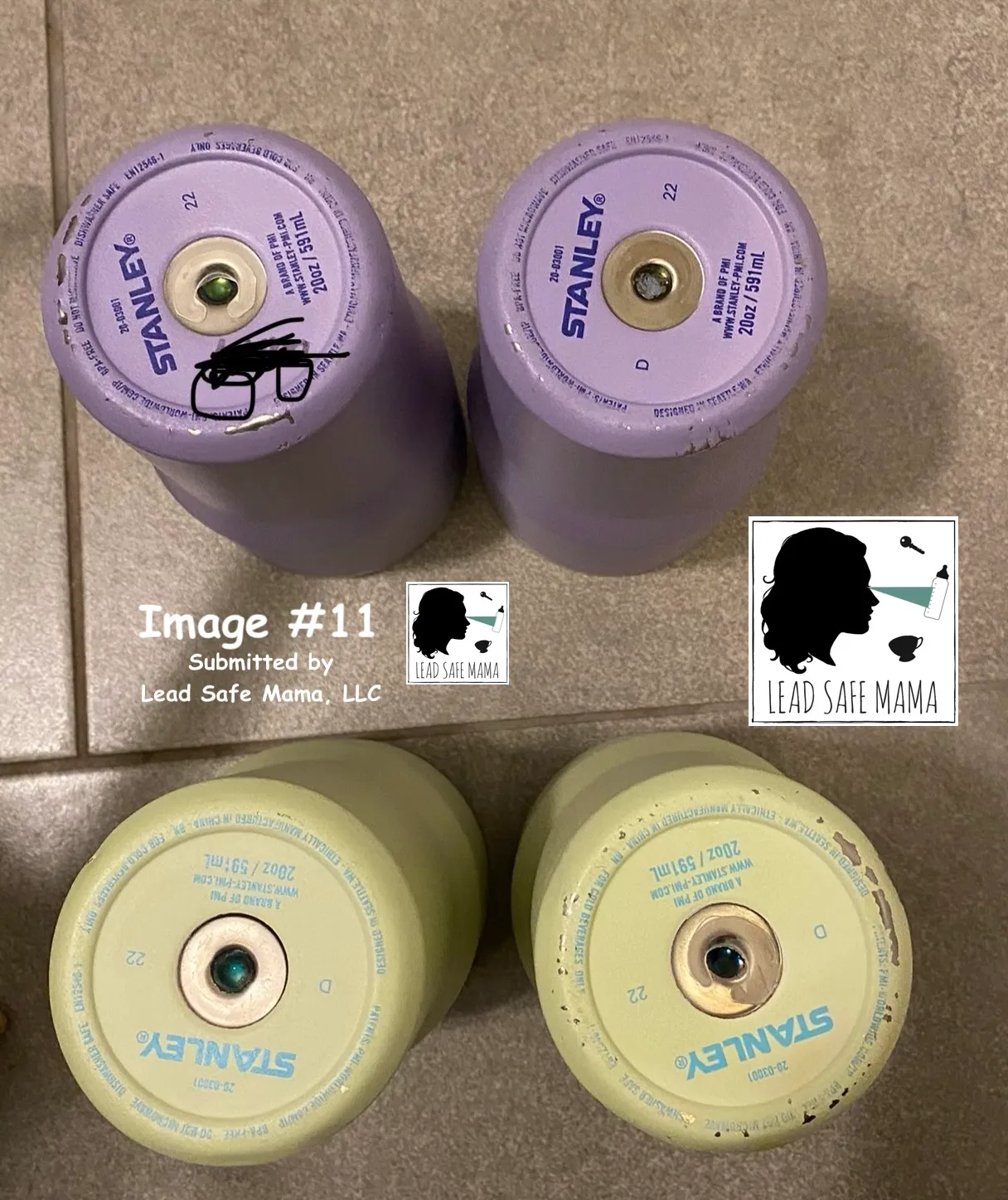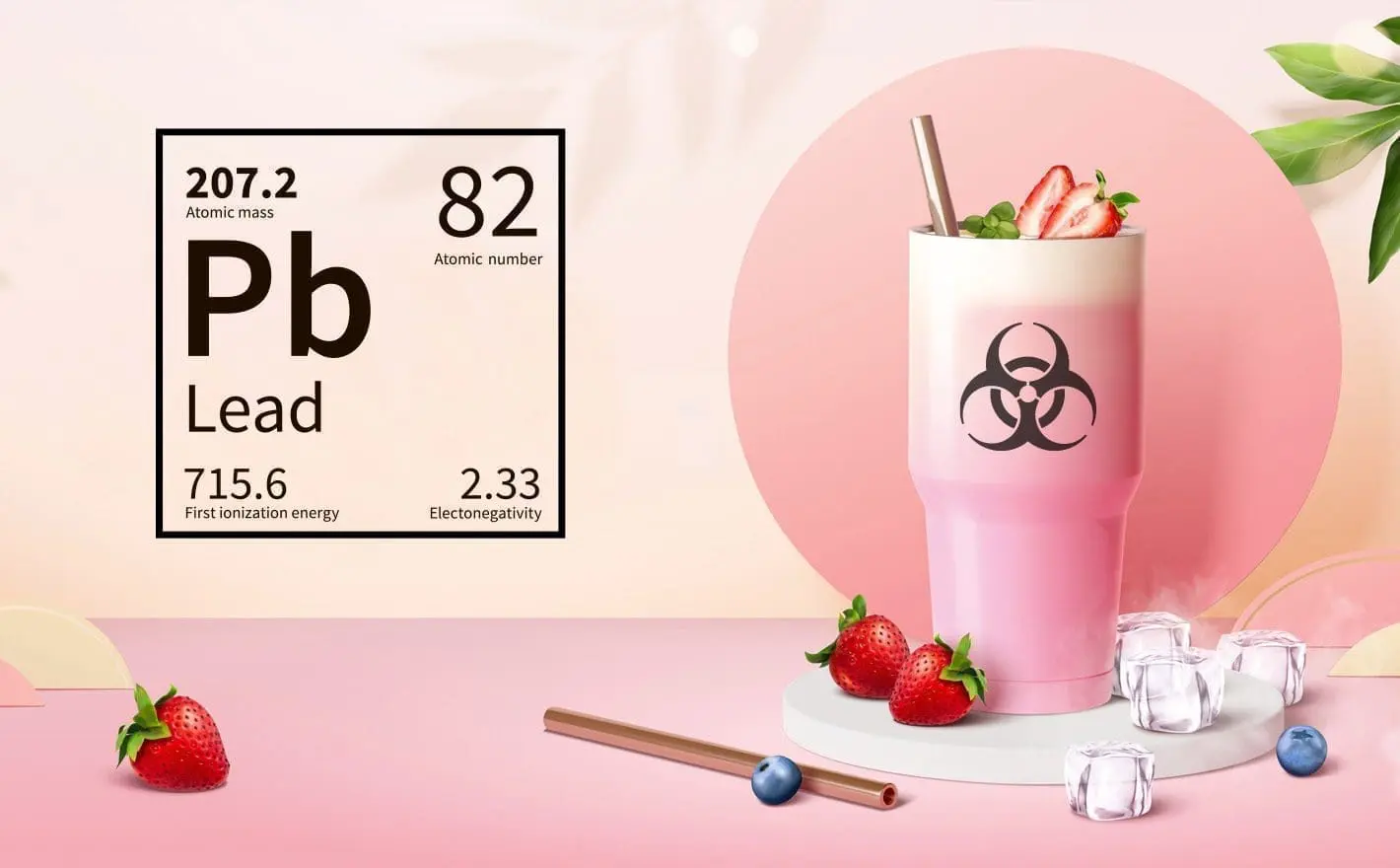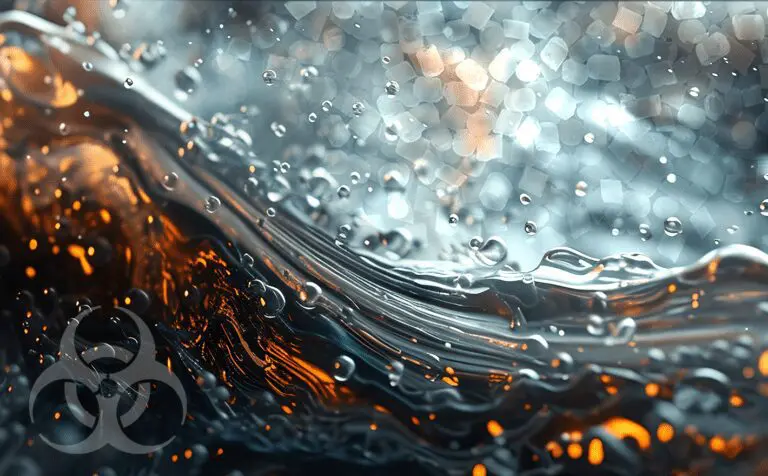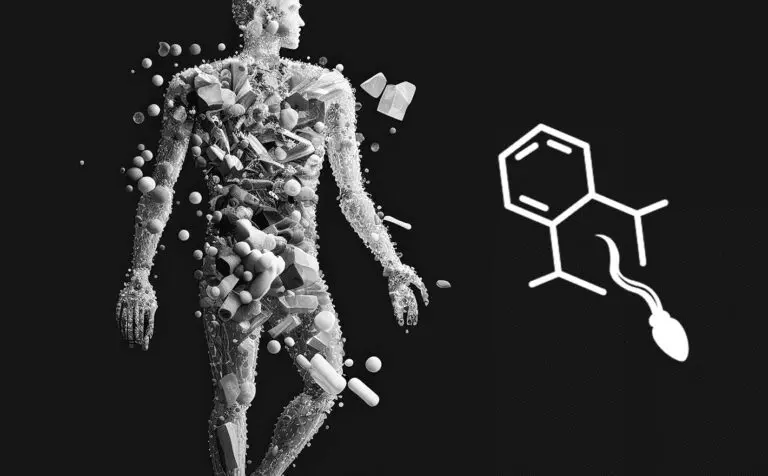There’s been a flurry of activity on the internet recently regarding the presence of lead in Stanley cups. Are they really a safety hazard–like so many on social media are claiming–or is this all overblown?
Many popular articles, like this one from the New York Times, claim that there’s nothing to worry about. Their reasoning seems to be pretty straightforward: you can’t get lead poisoning from the cups because it’s not in any of the materials that come into contact with liquids.
Seems open and shut, right? But that’s not quite the whole story.
Rather than the inside surface, as Stanley has explained, there’s lead in the vacuum insulation within the base:
“…the sealing material includes some lead. Once sealed, this area is covered with a durable stainless steel layer, making it inaccessible to consumers.”
Again, straightforward, right? Not quite, because Stanley also admits that the protective steel layer can sometimes come off, though they say it’s rare.
How rare, exactly? And how much lead are we talking about? To find that out, let’s first go to the original source of the story, Tamara Rubin.
Lead Safe Mama breaks the Stanley lead story
Lead is an incredibly pervasive heavy metal. According to research on lead exposure in the US, if you were born before 1997, there’s a 50% chance that you were exposed to dangerous levels of it as a child.
It’s also a powerful neurotoxin known to lower IQ. As with most poisons, children are especially vulnerable to its disastrous effects, which can lead to long-term learning disabilities and behavioral problems that most physicians consider irreversible.
Few people know more about this sort of thing than Tamara Rubin, AKA ‘the Lead Safe Mama’.
Mrs. Rubin has been a tenacious, outspoken lead safety advocate since two of her sons suffered acute lead poisoning in 2005, tragically resulting in permanent brain damage.
In March of 2023, almost a year before Stanley admitted that their tumblers contained lead, she published an article showing the results of her independent testing of the sealing dot material, confirming not only that they contained a large amount of lead, but in a form that’s bioavailable.
As a quick aside, it’s understandable if you’re dubious about home heavy metal testing, which is why it’s important to mention that Rubin uses a technology called X-ray fluorescence (XRF).
An XRF spectrometer isn’t an item even the most excited dilettantes or hobbyists are likely to purchase, because it costs almost as much as an entry-level Tesla: $35,000. It’s also the same technology that the US Consumer Product Safety Commission uses for this purpose.
So yes, her testing protocols seem to be legitimate, and thus she’s justifiably concerned by what she found.
In particular, she’s worried about what happens once the protective cap comes off and a child might come into direct contact with it. While Stanley has said this happens rarely, Rubin believes it occurs more often than the company admits, stating:
“Based on the informal social media poll I took (3/11/23) of Lead Safe Mama readers, I would estimate that between 5 and 10% of people using this cup reported that they experienced a failure of the seal on the bottom, with the disc falling off (exposing a Leaded sealing dot underneath).”
Here are some Stanley children’s cups with the lead parts exposed as a result of normal use (according to Rubin):

(This is an image from her website, one which she’s using as part of a CPSC violation she’s submitting).
Indeed, if this seal really does fall off that often as part of normal use, and if no one was warned ahead of time, then it’s pretty understandable that some folks would be upset enough to file a lawsuit–especially those with small children.
Lawsuit against Stanley cup manufacturer accuses them of fraud
One week ago, several women in California (one of whom is an attorney) decided to sue Pacific Market International (PMI), the company who owns the Stanley brand. The complaints of the class action lawsuit include, among others, unfair business practices and fraud.
Here’s are a few highlights of what’s being alleged:
- PMI’s target demographic is women of childbearing age, which includes all four plaintiffs
- The plaintiffs claim they would never have bought them if they knew they contained lead
- PMI did not disclose the lead in their cups until January of 2024
- PMI claims that using lead as a sealant is an ‘industry standard’, but many of their competitors use lead-free alternatives
- If they had disclosed the lead in the beginning, their “profits would undoubtedly have suffered”
It’s apparent from reading the lawsuit that these women mean business. Not only are they asking for $70 million for the ‘putative class’, but also an injunction that would force PMI to label all of their products as containing lead.
So, is the Lead Safe Mama involved in this case? Well, she’s not listed as one of the plaintiffs, but she is quoted in paragraph 22:
“Several experts have voiced their opinions that the lead content in Stanley cups is concerning…a child who fidgets with that broken bottle faces “a very possible and likely transference of microparticulate lead via normal hand-to-mouth behavior in young children.” (17)”
(Reference #17 is this article from the Today show, quoting Tamara Rubin)
It’ll be interesting to see how this all plays out. Given that the lawsuit is in California–the home of the incredibly stringent Proposition 65–it seems likely that PMI is a bit rattled. And that’s not to mention all of the bad PR that this is likely to generate, which could damage the Stanley brand even if they win in court.
The (leaden) tip of the iceberg
Lead exposure is undoubtedly a massive problem that’s still not taken as seriously as it should by many people, but it’s also just one among many toxins of concern in the modern world.
Other metals like mercury are also as pervasive as they are insidious. Pesticides, phthalates, PFAS, and thousands of other harmful chemicals can also easily find their ways into our bodies and wreck our vitality. From day one, CHOQ has been more outspoken on the dangers of these poiosonous compounds than nearly any other supplement company because we’re extremely passionate about spreading the word on how to protect yourself.
That’s why we regularly publish free articles on this topic. It’s also why we created APEX Liposomal Glutathione, the most advanced glutathione-based detoxification system on the market.
We say that with no exaggeration. Not only does APEX include liposomal glutathione and NAC, but also eleven other ingredients expertly formulated to support every part of the glutathione system, including the enzymes that generate, transport, and renew it. Click here if you’d like to learn more about APEX Glutathione’s formulation logic, ingredients, and brain health benefits.
Also, if you’d like to learn more about the toxicity of our world and how to protect yourself from it, you’ll love these articles:
- PFAS: the Forver Chemicals
- What to Avoid When Taking Glutathione
- Glyphosate Exposed: the Séralini Papers
- Hormones Under Fire: Worse Living Through Chemistry
- Clown World Report: Man Drinks Glyphosate on Camera





